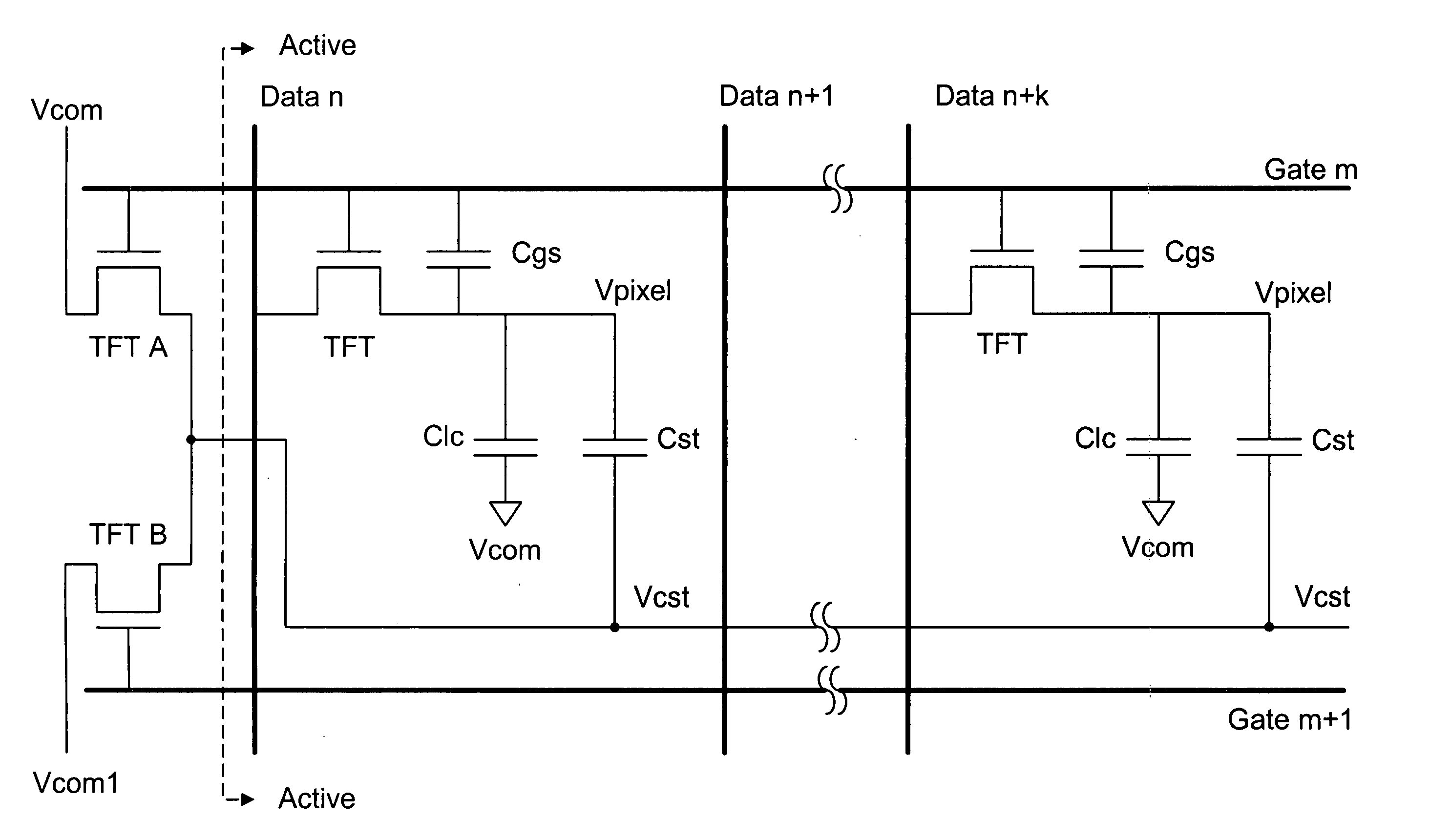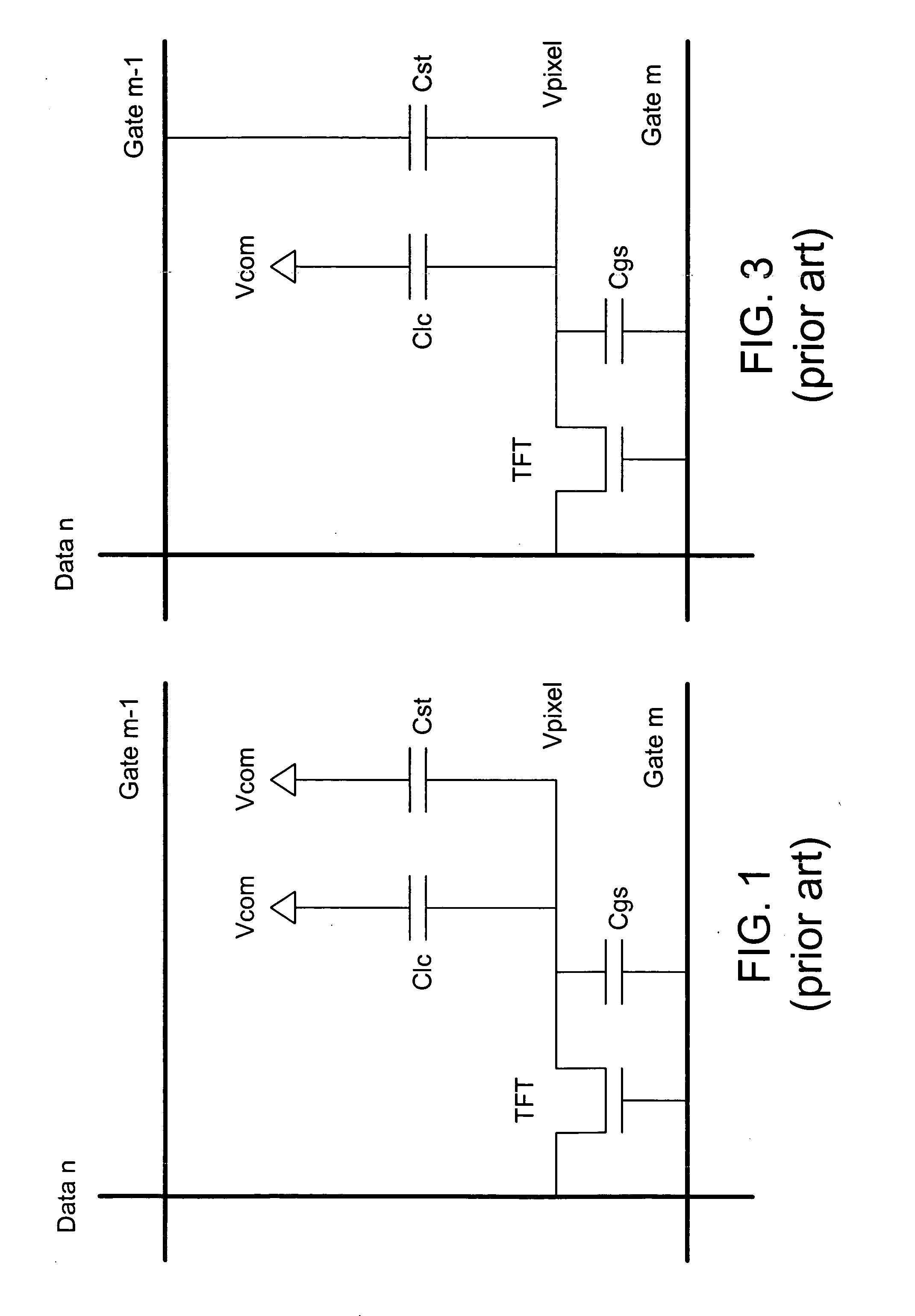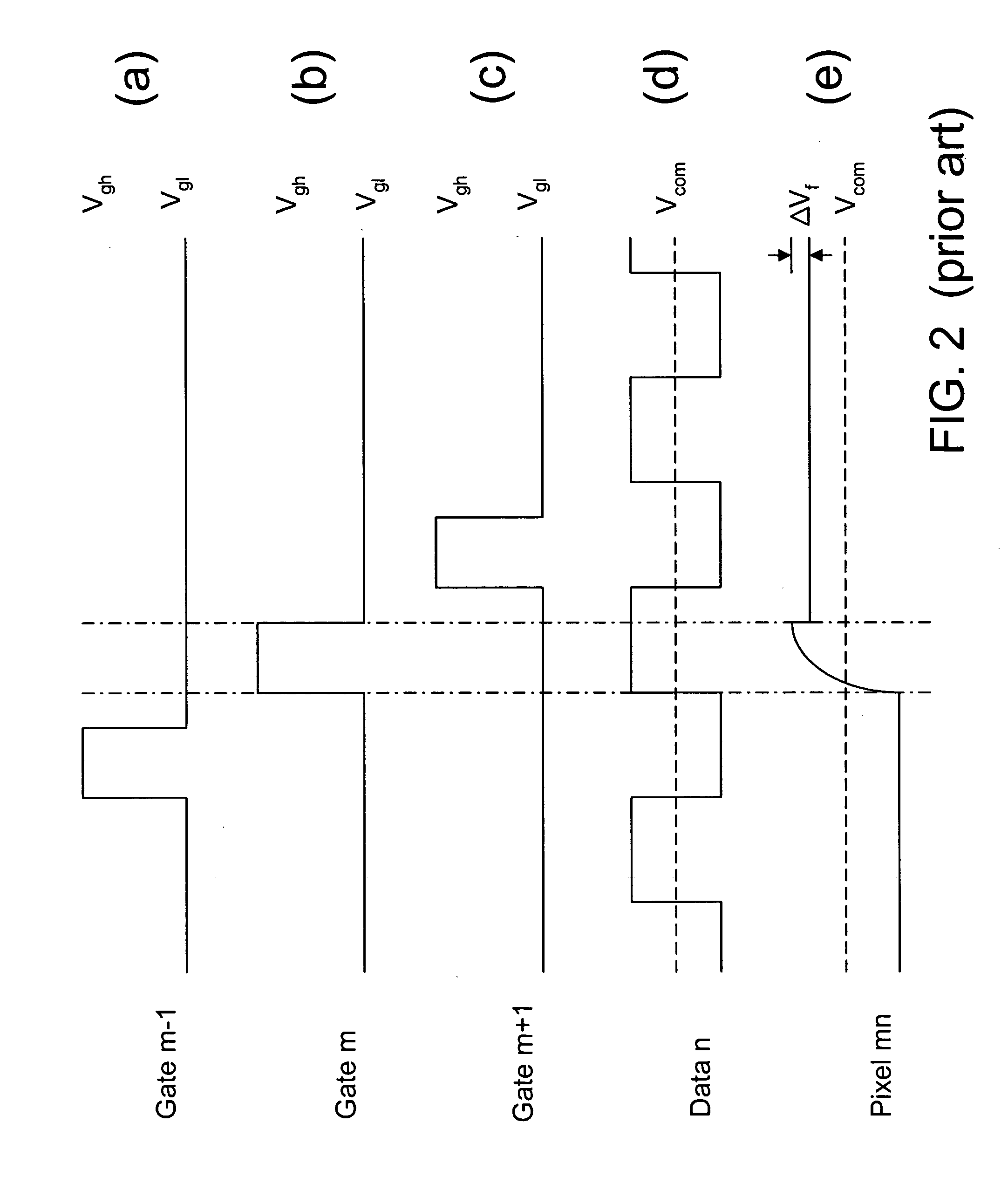LCD device with improved optical performance
a liquid crystal display and optical performance technology, applied in static indicating devices, non-linear optics, instruments, etc., can solve problems such as inability to use, and achieve the effect of reducing voltage potential
- Summary
- Abstract
- Description
- Claims
- Application Information
AI Technical Summary
Benefits of technology
Problems solved by technology
Method used
Image
Examples
Embodiment Construction
[0037] The present invention makes use of different signal levels in the common line voltages to compensate for the feed-through potential drop. As with prior art, the voltage potential associated with the charge capacity Clc is determined by the pixel voltage Vpixel and the signal level Vcom at a common line. In contrast to prior art, the voltage on one end of the additional charge storage capacitor Cst is switched between Vcom and Vcom1 as shown in FIG. 5. In one embodiment of the present invention, these voltage levels are controlled by TFT A and TFT B before the signal line VCst enters the active area of the LCD device. As shown in FIG. 6, when the signal level at gate line m is high (gate line m+1 being at Vgl), the switching TFT A and TFT are in the “ON” state but TFT B is “OFF”. The voltage potential across Clc is (Vdata−Vcom) and the voltage across Cst is also (Vdata−Vcom). The voltage potential across Cgs is (Vdata−Vgh). The total charge on these capacitors is
Qpixel=(Clc+C...
PUM
 Login to View More
Login to View More Abstract
Description
Claims
Application Information
 Login to View More
Login to View More - R&D
- Intellectual Property
- Life Sciences
- Materials
- Tech Scout
- Unparalleled Data Quality
- Higher Quality Content
- 60% Fewer Hallucinations
Browse by: Latest US Patents, China's latest patents, Technical Efficacy Thesaurus, Application Domain, Technology Topic, Popular Technical Reports.
© 2025 PatSnap. All rights reserved.Legal|Privacy policy|Modern Slavery Act Transparency Statement|Sitemap|About US| Contact US: help@patsnap.com



